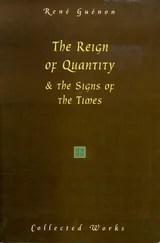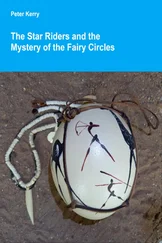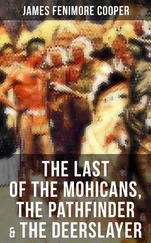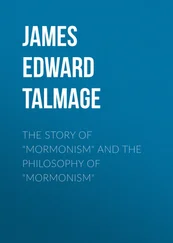James Frazer - The Belief in Immortality and the Worship of the Dead, Volume 2 (of 3)
Здесь есть возможность читать онлайн «James Frazer - The Belief in Immortality and the Worship of the Dead, Volume 2 (of 3)» — ознакомительный отрывок электронной книги совершенно бесплатно, а после прочтения отрывка купить полную версию. В некоторых случаях можно слушать аудио, скачать через торрент в формате fb2 и присутствует краткое содержание. Жанр: foreign_antique, foreign_prose, на английском языке. Описание произведения, (предисловие) а так же отзывы посетителей доступны на портале библиотеки ЛибКат.
- Название:The Belief in Immortality and the Worship of the Dead, Volume 2 (of 3)
- Автор:
- Жанр:
- Год:неизвестен
- ISBN:нет данных
- Рейтинг книги:3 / 5. Голосов: 1
-
Избранное:Добавить в избранное
- Отзывы:
-
Ваша оценка:
- 60
- 1
- 2
- 3
- 4
- 5
The Belief in Immortality and the Worship of the Dead, Volume 2 (of 3): краткое содержание, описание и аннотация
Предлагаем к чтению аннотацию, описание, краткое содержание или предисловие (зависит от того, что написал сам автор книги «The Belief in Immortality and the Worship of the Dead, Volume 2 (of 3)»). Если вы не нашли необходимую информацию о книге — напишите в комментариях, мы постараемся отыскать её.
The Belief in Immortality and the Worship of the Dead, Volume 2 (of 3) — читать онлайн ознакомительный отрывок
Ниже представлен текст книги, разбитый по страницам. Система сохранения места последней прочитанной страницы, позволяет с удобством читать онлайн бесплатно книгу «The Belief in Immortality and the Worship of the Dead, Volume 2 (of 3)», без необходимости каждый раз заново искать на чём Вы остановились. Поставьте закладку, и сможете в любой момент перейти на страницу, на которой закончили чтение.
Интервал:
Закладка:
§ 6. Conclusion
If now we attempt to sum up the effects which the belief in human immortality exercised on the life of the Maoris we may perhaps conclude that these effects were partly good and partly evil. On the one hand by ascribing to the chiefs the special protection of the powerful spirits of the dead, it invested the governing class with a degree of authority to which on merely natural or rational grounds they could have laid no claim; hence it tended to strengthen the respect for government and to ensure the maintenance of law and order. Moreover, by lending a supernatural sanction to the rights of private property among all classes it further contributed to abolish one of the most fruitful sources of discord and crime in the community and thereby to foster economic progress, which cannot exist without some measure of peace and security for life and possessions. These were great gains, and so far as the faith in immortality helped to win them for the Maoris, it certainly ameliorated their condition and furthered the cause of civilisation among them. But on the other hand the belief in the essential malignancy of the spirits of the dead and in their great power to harm the living added a host of purely imaginary terrors to the real evils with which man's existence on earth is naturally and inevitably encompassed: it imposed a regular system of needless and vexatious restrictions on social intercourse and the simplest acts of daily life; and it erected an almost insuperable barrier to the growth of science, and particularly of that beneficent branch of science which has for its object the alleviation of human suffering, since by concentrating the whole attention of the people on a false and absurd theory of supernatural agency it diverted them from that fruitful investigation of natural causes which alone can strengthen and extend man's control over matter. This was a heavy toll to pay for the advantages incidental to a belief in immortality; and if we were asked to strike a balance between the good and the evil which that belief entailed on the Maoris, we might well hesitate to say to which side the scales of judgment should incline.
CHAPTER II
THE BELIEF IN IMMORTALITY AMONG THE TONGANS
§ 1. The Tonga or Friendly Islands
The Tonga or Friendly Islands form an archipelago of about a hundred small islands situated in the South Pacific, between 18° and 22° South latitude and between 173° and 176° East longitude. The archipelago falls into three groups of islands, which lie roughly north and south of each other. The southern is the Tonga group, the central is the Haabai or Haapai group, and the northern is the Vavau group. In the southern group the principal islands are Tongataboo and Eua; in the central group, Namuka and Lifuka (Lefooga); in the northern group, Vavau. The largest island of the archipelago, Tongataboo, is about twenty-two miles long by eight miles wide; next to it in importance are Vavau and Eua, and there are seven or eight other islands not less than five miles in length. The rest are mere islets. Most of the islands are surrounded by dangerous coral reefs, and though the soil is deep and very fertile, there is a great lack of flowing water; running streams are almost unknown. Most of the islands consist of coral and are very low; the highest point of Tongataboo is only about sixty feet above the level of the sea. 128 128 Horatio Hale, U.S. Exploring Expedition, Ethnography and Philology (Philadelphia, 1846), pp. 4 sq. ; F. H. H. Guillemard, Australasia , ii. (London, 1894) pp. 497, 499. As to the scarcity of running water, see Captain James Cook, Voyages (London, 1809), iii. 206, v. 389. He was told that there was a running stream on the high island of Kao. As to the soil of Tongataboo, see Captain James Wilson, Missionary Voyage to the Southern Pacific Ocean (London, 1899), p. 280, "The soil is everywhere prolific, and consists of a fine rich mould, upon an average about fourteen or fifteen inches deep, free from stones, except near the beach, where coral rocks appear above the surface. Beneath this mould is a red loam four or five inches thick; next is a very strong blue clay in small quantities; and in some places has been found a black earth, which emits a very fragrant smell resembling bergamot, but it soon evaporates when exposed to the air."
However, some of the islands are lofty and of volcanic formation. When Captain Cook visited the islands in 1773 and 1777 there was apparently only one active volcano in the archipelago; it was situated in the small island of Tufoa, which lies to the west of Namuka. Cook saw the island smoking at the distance of ten leagues, and was told by the natives that it had never ceased smoking in their memory, nor had they any tradition of its inactivity. 129 129 Captain James Cook, Voyages , v. 277. For descriptions of the volcano see W. Mariner, Tonga Islands , Second Edition (London, 1818), i. 240 sq. ; and especially Thomas West, Ten Years in South-Eastern Polynesia (London, 1865), pp. 89 sqq. Both these writers ascended the volcano.
In the hundred and fifty years which have elapsed since Cook's time volcanic action has greatly increased in the archipelago. A considerable eruption took place at Tufoa in 1885: the small but lofty island of Kao (5000 feet high) has repeatedly been in eruption: the once fertile and populous island of Amargura, or Funua-lai, in about 18° South latitude, was suddenly devastated in 1846 or 1847 by a terrific eruption, which reduced it to a huge mass of lava and burnt sand, without a leaf or blade of grass of any kind. Warned by violent earthquakes, which preceded the explosion, the inhabitants escaped in time to Vavau. The roar of the volcano was heard one hundred and thirty miles off; and an American ship sailed through a shower of ashes, rolling like great volumes of smoke, for forty miles. For months afterwards the glare of the tremendous fires was visible night after night in the island of Vavau, situated forty miles away. 130 130 Thomas West, op. cit. pp. 79 sqq. ; J. E. Erskine, Journal of a Cruise among the Islands of the Western Pacific (London, 1853), p. 120; F. H. H. Guillemard, Australasia , ii. p. 497.
Another dreadful eruption occurred on the 24th of June 1853, in Niua Foöu, an island about two hundred miles to the north-north-west of Funua-lai. The entire island seems to be the circular ridge of an ancient and vast volcano, of which the crater is occupied by a lake of clear calm water. On the occasion in question the earth was rent in the centre of a native village; the flames of a new volcano burst forth from the fissure, belching a sea of molten lava, under which ten miles of country, once covered with the richest verdure, have been encased in solid rock, averaging from eight to fifteen feet in thickness. The lake boiled like a cauldron, and long after the more powerful action of the volcano had ceased, the waters of the lake were often rent by tongues of flame, which shot up from them as well as from the clefts in the surrounding precipices. 131 131 T. West, op. cit. pp. 82 sqq. ; George Brown, Melanesians and Polynesians (London, 1910), pp. 4 sq.
In the island of Late, lying to the west of Vavau, a new volcano broke out with great violence in 1854; the roar of the volcano was heard at Lifuka, fifty miles away; the immense pillar of smoke was visible by day and the fire by night. The central portion of one side of the mountain (about 2500 feet high) was completely blown out by the explosion. 132 132 T. West, op. cit. pp. 88 sq.
But not only have new volcanoes appeared or long extinct volcanoes resumed their activity within the last century in the existing islands, new islands have been formed by volcanic action. One such island, emitting volumes of fire, smoke, and steam, issued from the surface of the sea, and was discovered by the missionary ship John Wesley in August 1857; its appearance had been heralded some years before by a strange agitation of the sea and by fire and smoke ascending from the water. This new volcanic island lies about midway between the two other volcanic islands of Tufoa and Late. 133 133 T. West, op. cit. pp. 92-93.
A third new volcanic island seems to have been formed to the south of Tufoa in 1886. 134 134 I infer this from the entry "Volcanic island, 1886," in Mr. Guillemard's map of the Pacific Islands. He does not mention it in the text ( Australasia , ii. p. 497).
Another new island was thrown up from the sea about the beginning of the twentieth century; it was partly washed away again, but has again materially increased in size. 135 135 George Brown, Melanesians and Polynesians , p. 6.
It is noteworthy that the volcanoes, new or old, all occur in a line running roughly north and south at a considerable distance to the west of, but parallel to, the main body of the Tongan archipelago. They clearly indicate the existence of submarine volcanic action on a great scale. Even in the coralline islands traces of volcanic agency have come to light in the shape of pumice-stones, which have been dug out of the solid coral rock at considerable depths. 136 136 T. West, op. cit. p. 94.
In the lofty island of Eua an extensive dyke of basalt is found inland underlying the coral formation. 137 137 George Brown, op. cit. p. 4.
Интервал:
Закладка:
Похожие книги на «The Belief in Immortality and the Worship of the Dead, Volume 2 (of 3)»
Представляем Вашему вниманию похожие книги на «The Belief in Immortality and the Worship of the Dead, Volume 2 (of 3)» списком для выбора. Мы отобрали схожую по названию и смыслу литературу в надежде предоставить читателям больше вариантов отыскать новые, интересные, ещё непрочитанные произведения.
Обсуждение, отзывы о книге «The Belief in Immortality and the Worship of the Dead, Volume 2 (of 3)» и просто собственные мнения читателей. Оставьте ваши комментарии, напишите, что Вы думаете о произведении, его смысле или главных героях. Укажите что конкретно понравилось, а что нет, и почему Вы так считаете.











